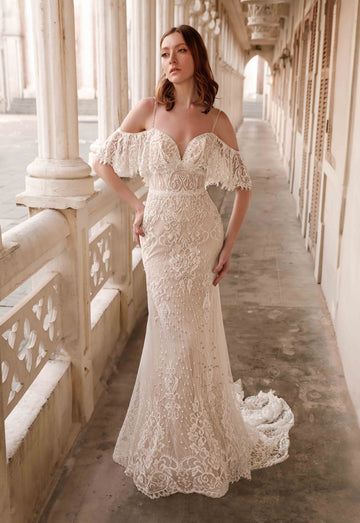Assessing the Long-Term Value of Wedding Dress OEM: What You Need to Know
Assessing the Long-Term Value of Wedding Dress OEM: What You Need to Know
The wedding industry is a beautiful tapestry of dreams and desires, with the wedding dress being the centerpiece for many brides. As the demand for unique and personalized wedding dresses continues to grow, Original Equipment Manufacturing (OEM) has emerged as a viable option for aspiring fashion designers and bridal boutiques. In this article, we will explore the long-term value of Wedding Dress OEM, focusing on its benefits, challenges, and how it can impact your business in the long run.
Understanding Wedding Dress OEM
Wedding Dress OEM refers to the practice of having wedding dresses designed and manufactured by third-party companies who specialize in producing garments based on your specifications. This business model allows designers and retailers to offer unique styles without the burden of hefty production costs. How does this model add value for businesses? The answer lies in the numerous benefits it provides.
| Benefits of Wedding Dress OEM | |
| 1. Cost-Effectiveness | OEM allows small businesses and startups to avoid large-scale investment in manufacturing facilities, lowering overhead costs. |
| 2. Customization | Designers can personalize each dress according to their client's preferences, enhancing customer satisfaction. |
| 3. Access to Expertise | Working with established manufacturers provides designers access to specialized knowledge and advanced techniques. |
| 4. Scalability | OEM offers the flexibility to scale production up or down based on market demand. |
| 5. Time Efficiency | Developing a relationship with an OEM can significantly reduce the time needed for sample production and delivery. |
Challenges Faced in Wedding Dress OEM
While the benefits are substantial, businesses must also navigate various challenges associated with OEM. Understanding these challenges is crucial for preserving the long-term value of your wedding dress line.
Quality Control
Maintaining quality when outsourcing production can be a significant hurdle. How can businesses ensure their OEM partners produce high-quality dresses? Regular visits to manufacturing facilities, quality checks on sample items, and establishing stringent contractual agreements can help maintain standards.
Communication Barriers
OEM often involves collaboration with overseas partners, which can lead to miscommunications due to cultural differences or language barriers. To mitigate these issues, it’s advisable to have a dedicated liaison who can navigate both business cultures effectively.
Intellectual Property Risks
Working with third-party manufacturers raises the risk of intellectual property theft, particularly for unique designs. Using non-disclosure agreements (NDAs) and ensuring that contracts clarify ownership rights can help safeguard your brand's creative assets.

Market Trends Influencing Wedding Dress OEM
To assess the long-term value of Wedding Dress OEM, it's essential to understand market trends. The following factors are shaping the landscape of wedding attire:
- Eco-Friendly Practices: Many brides are seeking sustainable options, leading to a surge in demand for dresses made from eco-friendly materials. OEMs that specialize in sustainable fabrics will likely see increased business.
- Technological Innovations: Advances in design software and 3D printing will continue to shape how wedding dresses are conceptualized and produced.
- Rise in Online Retailing: E-commerce has revolutionized how dresses are marketed and sold. OEM partners must adapt to this shift, providing unique digital solutions for clients.
Calculating the Long-term Value of Wedding Dress OEM
To truly assess the long-term value, businesses need to consider several key performance indicators (KPIs) to understand the impact of OEM on their bottom line:
| KPI | Description |
| Profit Margins | Analyze the cost of goods sold versus the retail price to evaluate profitability. |
| Customer Satisfaction | Use surveys and feedback to track customer experiences and adjust products accordingly. |
| Lead Times | Measure the time from order placement to dress delivery to ensure quick turnarounds. |
| Market Share | Keep track of sales data relative to competitors to gauge growth. |
| Brand Recognition | Monitor social media engagement and customer referrals to assess brand visibility. |
Best Practices for Maximizing Long-Term Value
To fully leverage the benefits of Wedding Dress OEM while mitigating risks, follow these best practices:
- Establish Clear Communication Channels: Regular updates and feedback loops can ensure both parties remain aligned on expectations.
- Invest in Relationships: Building a solid rapport with your OEM partner can result in more favorable negotiation terms and a better understanding of each other's capabilities.
- Adapt to Feedback: Be responsive to customer feedback to iterate on your designs promptly and effectively.
- Stay Informed: Keep abreast of emerging trends in the wedding dress market and incorporate innovative ideas into your designs.
Conclusion
Assessing the long-term value of Wedding Dress OEM involves a comprehensive understanding of its benefits, challenges, and market trends. With cost-effectiveness, customization, and scalability as prominent advantages, OEM can provide a strategic edge for designers and retailers. However, to fully harness this potential, businesses must prioritize quality control and communication while remaining agile in the face of changing consumer preferences.
By employing best practices, continually monitoring KPIs, and responding to market demands, wedding dress lines can achieve success in the competitive landscape. This approach not only enhances customer satisfaction but can also solidify a brand's loyalty among brides looking for their dream dresses. Remember, a successful partnership with your OEM can yield not just beautiful dresses but also long-lasting business relationships.
